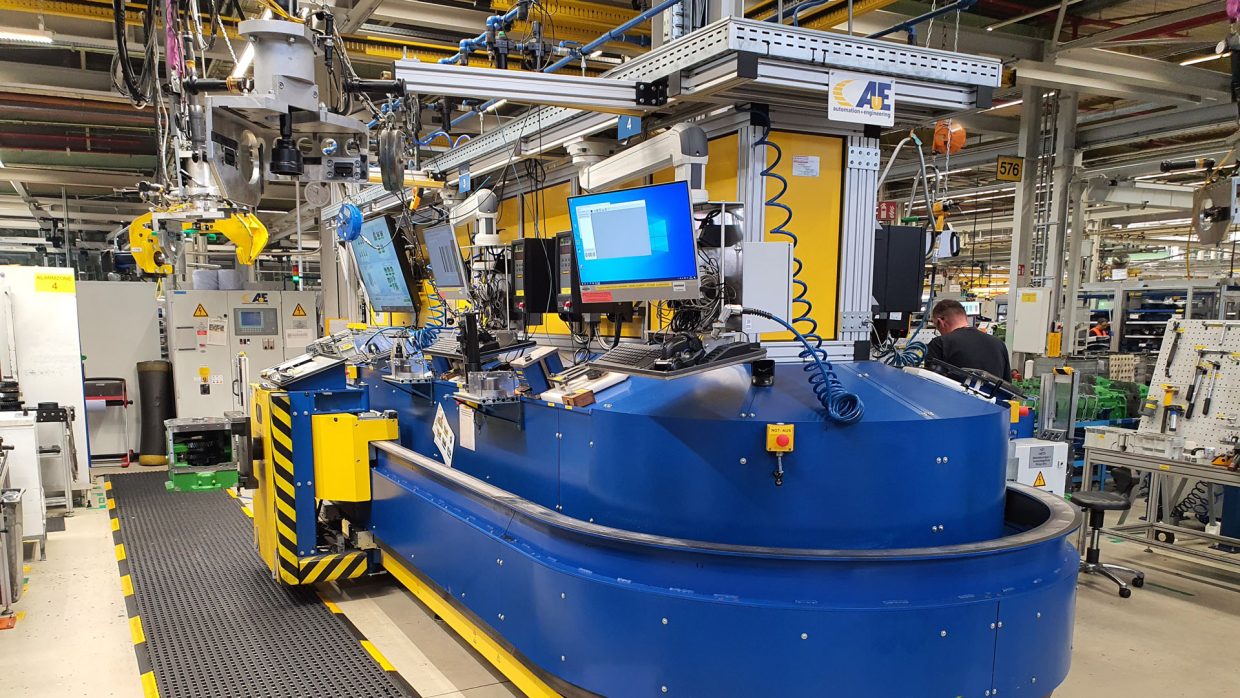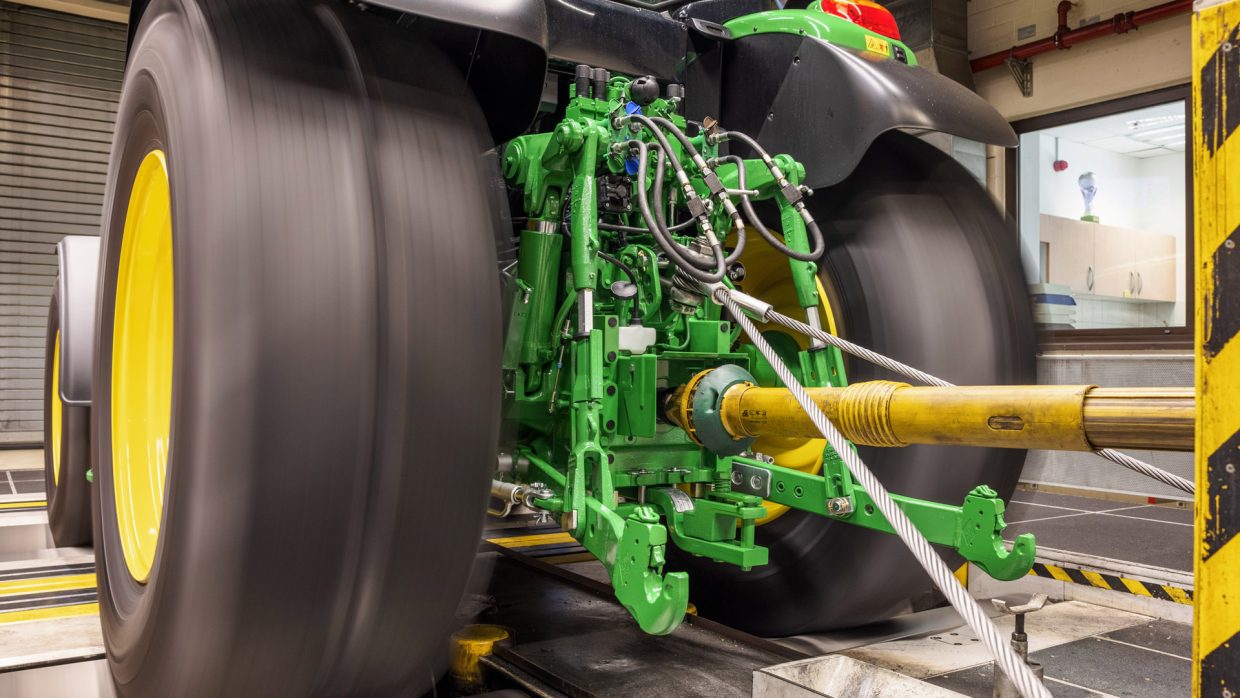Mr Loesch, why is quality so important for John Deere?
Quality is the foundation of all our work. Customers buy our green and yellow tractors because they trust the John Deere brand. Farmers are entrepreneurs and they demand reliability, high machine availability and low operating costs. Only with reliable products can our customers satisfy the needs of their clients.
Turning customers into fans is our motivation, with every employee giving their best every day. We are particularly proud when a customer says that his grandfather and his father drove John Deere tractors, and now he is the third generation to do the same.

How do you ensure this high quality?
In product development, quality begins five years before we go into series production. To achieve this, our development teams evaluate the future reliability of our products using simulation models. The results provide accurate predictions, allowing us to identify areas that we then systematically improve. This continuous improvement process is consistent – from the design stage through to the in-house production of assembly parts.
In addition, we carry out extensive tests before, during and after production, in order to detect errors before the tractor is delivered to its new owner. Only highly qualified and experienced skilled workers, who are supported by the latest technologies, work in Mannheim.
Take us with you to production – what processes do you use to prevent errors from occurring there?
Our processes ensure that we can master the complexity of using 20,000 individual parts in 60,000 possible combinations and assemble these without confusion. An example of this is the “pick-by-light” system. A visual signal shows the employee which component was assigned to the customer’s order.
Our processes ensure that we can master the complexity of using 20,000 individual parts in 60,000 possible combinations and assemble these without confusion.
Rainer Loesch
Or, to avoid leaks, we use an intelligent torque tool, also called Smart Torque Wrench. This tool controls the screwing sequence, selects the specified tightening torque, supporting the worker in the assembly of complex hydraulic line packages. If the system detects any deviation, the process stops and actively requests a correction to be made.
We also invest in items that improve technical cleanliness. We purchase brush carpets, a kind of tyre scraper for forklifts, to reduce the amount of dirt brought into the production and assembly areas by factory traffic. With this technique, we catch 500 kg of dirt in front of the factory building every year, reducing the potential for errors. This protects sensitive hydraulic and electrical systems and protects the customer from malfunctions and machine failures.

How much does each employee contribute to John Deere quality?
Technology and processes can be duplicated. The attitude to work, seeing the customer behind every order, being aware of their own responsibility and giving their best every day; that’s where our employees make the difference. It is important for us to create awareness and build a quality culture, in which every employee recognises and accepts quality and customer satisfaction as their personal responsibility. It is an easy concept, but nevertheless it is a continuous and long-term process.
To this end, we carry out regular campaigns, such as our “I am quality because…” campaign. In their own statements, our employees have described why quality is important to them, and what personal contribution they make to it. The resulting poster campaign, with over 500 participants, shows the importance of quality and reminds us of our personal responsibility.
What happens if an error occurs?
First of all, every mistake is always an opportunity for improvement. All complaints, whether internal or external, are recorded in a system, evaluated, and prioritised according to various factors. With this, we control the assignment and the processing time. Analysing the cause of an error is usually a highly complex process and, from experience, takes a large amount of time. To shorten this time, we have invested heavily in additional staff.
In the last 8 years, we have halved the number of customer complaints.
Rainer Loesch
A Team of quality engineers works, 100% without distraction from day-to-day business, on root cause analysis. We consistently use the machine data, obtained from JD Link, to better understand influences and relationships. This allows us to deal with customer complaints much more quickly than in the past. This success is measurable. In the last eight years we have halved the number of ‘bugs’ reported to us by customers.
What role does your team play in this?
Team Quality creates, collects, and processes data, because we can only improve that which we can measure. We create transparency by revealing potential. In addition to a quality strategy, planning and technology, we are also responsible, as a service provider, for measurement and laboratory services, complaints processing, product audits, driving tests, field checks and much more. A total of 150 highly motivated employees work, on behalf of our customers, on the quality of our John Deere tractors coming from the Mannheim plant every day.
And how are errors communicated to customers?
Although quality is very important, customer complaints will always exist in the future. We stand for maximum transparency and openness. It’s always annoying when a customer encounters an error. First, we check why this error was not found by our extensive tests, and what measure we can implement to avoid its recurrence.
To achieve this, we invite customers with poor product experience to the factory – to describe and discuss their problems face to face. This feedback makes us responsive as a team and gives us a chance to regain lost trust from the customer. We present the customer with troubleshooting options, thereby eliminating the possibility of errors being repeated in future products.
Quality is a firmly anchored corporate value. Customer satisfaction is and remains an affair of the heart, and we give our best every day.
Quality control in the factory: three highlights
Audit Center
Every week, around five finished tractors are taken, at random, from assembly or storage for an extensive test. The test checklist contains around 250 items, including:
- Tractor equipment according to the construction card
- Screw tightening torques
- Functional tests of the hydraulic system, the electrics/electronics
- Overall impression in terms of colouring and finishes
- Noise measurements
- Tracking adjustment
- Laying of hydraulic/electrical lines
- Driving test
- With the engine running → power take-off, fuel consumption, leaks
- Heating and air conditioning, engine cooling system
Product final inspection (PFI)
The PFI (Product Final Inspection) test program is carried out on 20% of the daily production. Our 10 experienced test drivers have both agricultural and technical training, and therefore know the machine from “both” sides. They drive the tractors for 45 minutes under difficult conditions (vibration track, ramp brake test and function tests of the hydraulic couplers and systems). After checking, any errors discovered are sent via a network to the relevant dispatch employees, who then inspect, once more, all potentially affected machines. With the PFI test step, you can hear, feel, and discover the remaining weak points outside of the previous test routine.
Online test stand (OTS)
The online test stand (OTS) is a special feature in the agricultural engineering industry, which enables 100% testing of performance, consumption, and functions. Here, 10% of the daily production is checked for 30 minutes. The respective tractor data is transmitted to the test stand via a mobile data adapter, for example, the tractor model, wheelbase, engine and transmission version, and wheel combination. All test results can be transmitted online, in real time, to the relevant departments for immediate evaluation. If the test values deviate, the previously produced batches are checked 100%.



